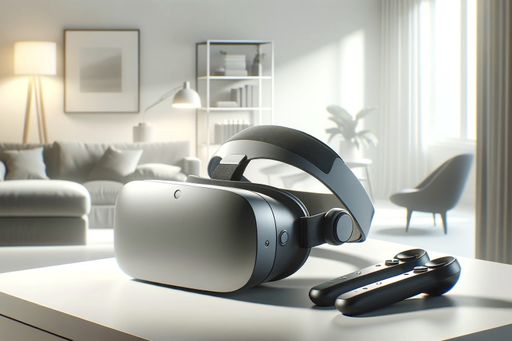Qualcomm's Newest VR/AR Chip Powers Samsung and Google's Next Headset
Samsung and Google will be using Qualcomm's latest mixed-reality chipset for their upcoming VR/AR headsets, competing with Apple's Vision Pro.

Qualcomm's XR2 Plus Gen 2 Chip
Samsung and Google are set to release a new mixed-reality headset in the coming year, aimed at competing with Apple's Vision Pro. The chipset powering these headsets will be Qualcomm's XR2 Plus Gen 2 chip, which offers improved display resolution and simultaneous sensors. It is expected to bring a wave of more expensive, pro-focused headsets to the market.
The XR2 Plus Gen 2 chip builds on the features of Qualcomm's previous XR2 Gen 2 chip, offering boosted graphics, color passthrough camera quality, external camera support, and onboard AI feature possibilities. This new chip is targeted at premium headsets that can directly compete with Apple's $3,499 Vision Pro in terms of features and price.
In addition to Samsung, Qualcomm has confirmed other partners who will be using the new chip in their upcoming devices. These partners include HTC Vive, Immersed, Play for Dream, and an unannounced hardware partner that will be revealed at CES.
Improved Display and Camera Quality
The XR2 Plus Gen 2 chip offers several advantages, including support for higher-resolution displays and more simultaneous cameras and trackers. Manufacturers can design their hardware to include eye tracking and full-body tracking, thanks to the new chip. Qualcomm promises up to 4.3K pixel resolution per eye at a 90Hz refresh rate.
This improved resolution also translates to better passthrough camera quality. Qualcomm's senior director of product management, Said Bakadir, explains that the new chip supports better camera resolutions and can display images in more detail on higher-quality displays. This means that headsets using Qualcomm's new chips, such as Samsung's, could potentially rival Apple's Vision Pro in terms of mixed-reality quality.
The XR2 Plus Gen 2 chip expands on the features of its predecessor, the chip used in the Meta Quest 3 headset. It supports up to 12 cameras and sensors, offering more possibilities for external video capture, motion tracking, depth sensing, as well as internal features like eye and face tracking. Reports suggest that Samsung and Google may even incorporate radar-based Soli sensor technology for near-body gesture tracking in their headsets.
Enhanced Connectivity and Cross-Device Collaboration
Qualcomm's XR2 Plus Gen 2 chip not only improves the hardware capabilities of VR/AR headsets but also enhances connectivity. It includes Wi-Fi 7 support, which enables faster connections with laptops, tablets, and phones. Qualcomm has already developed split rendering technology that allows headsets to share processing power with other devices, and it is exploring ways for phones and AR glasses to collaborate.
Devices using this chip could collaborate on AI functions, share sensors, and even use smartphones as an integral part of the VR/AR experience. For example, a phone camera could track a user's body during a workout in VR/AR. Apple is already emphasizing the Vision Pro's ability to connect with Macs, and Samsung and Google may take a similar approach, enhancing connectivity with computers and phones, specifically leveraging Google's Android OS.
Shahram Izadi, vice president of AR at Google, has expressed excitement about the Snapdragon XR2 Plus Gen 2 chip's capabilities, mentioning the Android ecosystem and its potential to enable new experiences.


